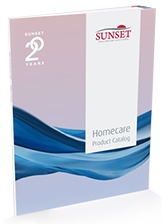Shop around for oxygen supplies in the New Year.
Controlling costs on supplies isn’t a new concept for most oxygen home care providers. Unlike the CPAP market where suppliers are reimbursed for each product provided to patients, oxygen suppliers are reimbursed a flat rate for each patient, no matter how many supplies they provide. But with the Affordable Care Act and competitive bidding, suppliers need to push those cost savings even further.
When everyone is getting reimbursed the same amount, you don’t want to be the one paying more for your supplies. The biggest tip I can give you is to shop around. If your company has been purchasing supplies from the same manufacturer for years, this might be a great time to shop for new suppliers.
Are All Oxygen Filters Created Equal?
Off-brand companies frequently carry the same quality supplies or even the exact same products for a lower cost, but they don’t have the name recognition. Let’s say you purchase your oxygen concentrators from Acme Manufacturing. That concentrator comes with a foam filter that needs to be replaced regularly. Acme probably does not manufacture that filter; they likely purchase it from a supply company that makes various products such as foam pillows and mattresses in addition to filters. That foam supply company probably sells the same filter to multiple manufacturers and distributors, so in many cases you can get the exact same filter from a different company for a lower price.
Additionally, there are companies that focus mainly on replacement parts for all of the different manufacturers, sort of like the “AutoZone” of the oxygen industry. You can buy an air filter for your Ford Explorer directly from Ford, or you can go to AutoZone and get one for your Explorer and your Audi in the same place for a lower price.
Original Equipment Manufacturers (OEMs) like our fictional Acme Manufacturing or real companies such as Ford make most of their money on the original device like the car or the oxygen concentrator, not the filters, so they don’t focus on offering the best value for replacement parts like some other distributors and manufacturers do.
How-to Guide
The first step to finding better prices is to research supplier options. Industry tradeshows and publications like HomeCare and HME News are great resources to find other manufacturers and distributors who might offer the same products you are currently purchasing at a lower price. They may not be a name you recognize, but they might carry parts for many of the brands that are familiar to you or that you already carry like Invacare, Philips Respironics or DeVilbiss.
Reach out to a few of those companies and ask them what they would be willing to do to earn your business. Let them know that you are interested in potentially switching suppliers and you would like to have some samples of their products shipped to your office for testing purposes. Manufacturers are often willing to provide free samples so they can prove the quality of their products to you. Distribute samples to your patients and see how they compare to the products from your current supplier.
Additionally, check with those suppliers to see if they have any price breaks with higher quantities, sales promotions or free services they can provide to sweeten the deal. Many suppliers are able to provide services such as private labeling, kitting and free or discounted shipping, as well as product guarantees or discounts for new customers, but you won’t know until you ask. The suppliers that are willing to work hard to earn your business are probably the same ones that will offer extra service and perks to keep you happy in the future. In the end, you might decide to stay with your current supplier, but at least you have done your due diligence and know you are getting the best prices you can.








